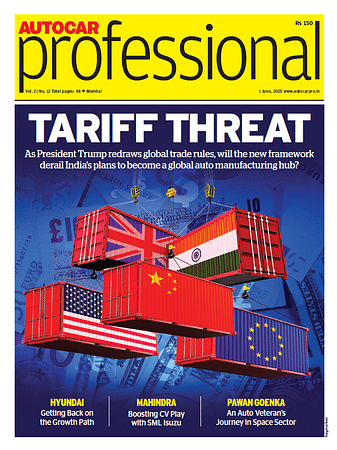As Clean Tech Adds Weight, Every Gram Counts: CV Raman – Maruti Suzuki
The member of the Executive Committee and the former CTO of Maruti Suzuki explained why lightweighting is now core to vehicle engineering.
In the age of clean mobility, every gram matters.
As automakers transition from internal combustion engines to CNG, hybrids, and battery electric vehicles, the race to reduce tailpipe emissions is colliding with a new challenge: increased kerb weight. With each layer of technology—from CNG tanks to hybrid batteries and electric drivetrains- modern vehicles are becoming heavier, forcing engineers to chase weight savings down to the last gram.
At the 2025 edition of the Autocar Professional Vehicle Lightweighting Webinar, C V Raman, former CTO and current executive committee member at Maruti Suzuki India, called this shift a defining moment for automotive engineering.
“If you add CNG, there is about an 8% increase in weight over the ICE vehicle. If you use a strong hybrid, the weight goes up further. And if you go electric, the weight increases even more—it’s 1.5 times higher,” Raman stated in his keynote.
The weight creep, he emphasized, directly impacts fuel efficiency, range, safety performance, and carbon emissions, pushing lightweighting from a desirable engineering trait to a regulatory and commercial necessity.
“Technology introduction means that weight is going to go up. And when weight increases, it impacts fuel efficiency and CO₂ emissions per kilometer. That is where lightweighting becomes not just an option, but a compulsion,” he said.
Cleaner, But Heavier
CNG and hybrid powertrains require additional fuel storage and electric components, while battery electric vehicles demand large battery packs and thermal management systems. These cleaner propulsion systems, while advancing India’s energy security and net-zero goals, pose a new challenge: how to keep vehicles light enough to be efficient, safe, and affordable.
“Every engineer strives to reduce weight in every aggregate and system,” Raman explained. “Even a one-gram reduction per part is significant in our engineering process.”
Material and Process Innovations
To counter the added mass from clean powertrains, automakers are exploring ultra-high tensile steels, aluminum, thermoplastics, and even magnesium alloys. The goal: increase strength without adding weight.
Maruti, for instance, has moved from metal to plastic for fuel tanks, replaced cast iron with aluminum, and introduced lightweight seats, composite parts, and optimized frames.
Manufacturing processes are also changing. Technologies like gigacasting, pioneered by Tesla and Chinese EV makers, are being evaluated for their ability to reduce parts, welds, and ultimately, vehicle mass.
“New material combinations mean new manufacturing processes. The platform, the structure, even the battery pack integration must evolve,” Raman said.
Regulations Make It Inevitable
With India’s evolving regulatory landscape—CAFE norms, WLTP (2027), BNCAP safety ratings, ADAS readiness, and the EPR recycling framework—lightweighting is now at the intersection of compliance and competitiveness.
“CO₂ reduction is not just good for the environment, it’s necessary for regulatory compliance. Especially in EVs, where battery weight eats into range, weight savings can directly boost customer value,” he explained.
RELATED ARTICLES
Cosworth Expands Role in 24 Hours of Le Mans, Supplying Electronics to 85% of Grid
The company's return as a powertrain supplier marks its first engine entry at Le Mans since 2015.
TVS Supply Chain Solutions Head of Strategic Initiatives Resigns
Ravi Prakash Bhagavathula steps down from senior management role after seven years with the company, citing pursuit of p...
Mahindra Logistics Opens New Warehousing Facility in Phaltan for Cummins India
The logistics company has launched a 300,000 square foot facility in Maharashtra to support Cummins India's nationwide d...





 12 Jun 2025
12 Jun 2025
 800 Views
800 Views





 Shruti Shiraguppi
Shruti Shiraguppi


 Angitha Suresh
Angitha Suresh


